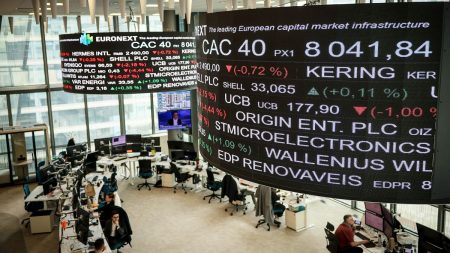Italy’s Banco BPM has firmly rejected a takeover proposal from its larger rival, UniCredit, stating that the offer does not adequately represent Banco BPM’s profitability and potential value for its shareholders. In their public announcement, Banco BPM emphasized that the unsolicited bid, which was made at a valuation of around €6.657 per share, fails to align with the lender’s current business strategy and future growth avenues. The proposal was reviewed during a recent board meeting where senior officials argued that the merger would not be in the best interests of their stakeholders. This rejection highlights Banco BPM’s commitment to its independence and a positive foresight for its business trajectory.
UniCredit’s offer, estimated to value Banco BPM at approximately €9.6 billion, has sparked apprehension in the financial community, especially due to the implications of such a merger on jobs and competition within the Italian banking sector. Concerns have been raised that if UniCredit were to expand its operations in Germany—where it is already increasing its stake in Commerzbank—this could lead to a diminished focus on Italian banking needs, including potential job losses and reduced support for small and medium-sized enterprises. Banco BPM’s rejection reflects broader worries about how such a merger could dilute the bank’s strengths and expose its stakeholders to risks associated with UniCredit’s foreign expansion strategies.
The political landscape surrounding UniCredit’s bid is particularly charged. Italian Economy Minister Giancarlo Giorgetti has indicated that the government might invoke its “golden power” legislation to obstruct the takeover, underlining the government’s intent to protect national assets deemed strategically important. This legislative tool allows the state to intervene in transactions involving critical sectors, further complicating UniCredit’s intentions. In addition, there is a concerted government effort to consolidate the banking sector around institutions like Monte dei Paschi di Siena (MPS), which presents an obstacle to UniCredit’s ambitions. Banco BPM’s recent acquisition of a 5% stake in MPS is seen as a strategic move toward the realization of this government vision, further emphasizing its desire to remain independent.
Moreover, the backdrop of ongoing tensions between the banks and regulatory entities is also reflected in the potential for involvement from Crédit Agricole, a French lender which holds a significant stake in Banco BPM. Reports suggest that Crédit Agricole may have increased its ownership above the regulatory limit of 10%, which would require approval to maintain such a position. This scenario could add complexity to UniCredit’s proposal, as any increased stake by Crédit Agricole must be navigated carefully within the framework of Italian banking regulations. This dimension underscores the intricate dynamics at play in the ongoing discussion of market consolidations and competitive banking strategies within the European financial landscape.
While Banco BPM continues to assert its autonomy in the face of UniCredit’s bid, it is simultaneously pursuing its own growth strategies, as evidenced by its recent acquisition of Anima Holding for €1.6 billion. This move signifies Banco BPM’s desire to diversify its revenue sources in response to changing economic conditions, particularly in light of pressures associated with decreasing interest rates. The investment in Anima, which has close ties to MPS, ties into Banco BPM’s broader strategy to strengthen its position and capitalize on potential synergies within the domestic banking landscape, thus fortifying its resistance to external acquisition efforts.
Overall, the ongoing discourse surrounding UniCredit’s attempted acquisition of Banco BPM highlights the interplay of market forces, regulatory scrutiny, and strategic corporate maneuvers within Italy’s banking sector. Each party involved—whether it be the banks, government regulators, or stakeholders—has distinct interests that will shape the outcomes in this high-stakes environment. The future of these institutions remains uncertain as they navigate through an evolving financial landscape fraught with potential risks and opportunities for growth and development.














